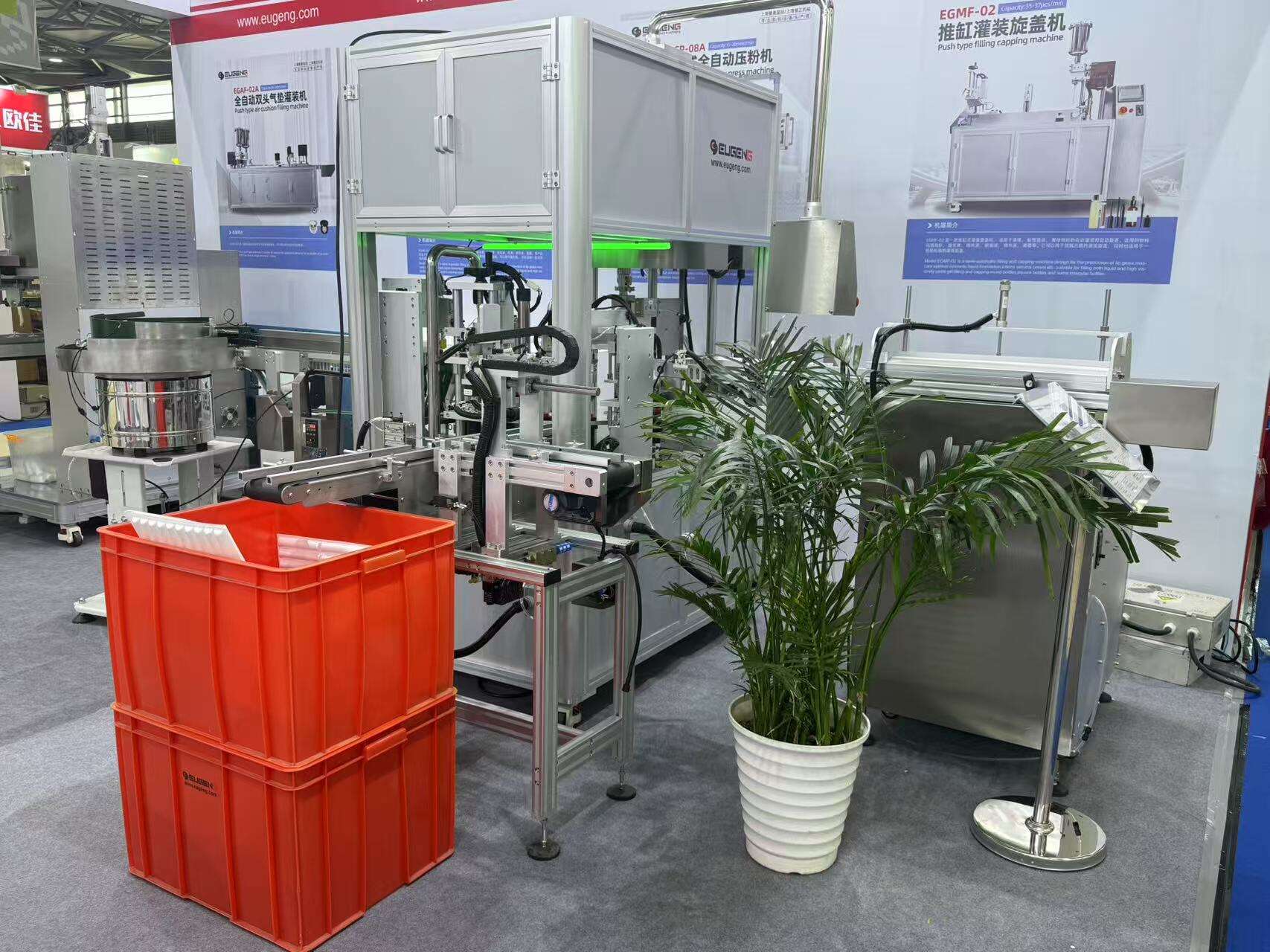The Fundamentals of Automatic Filling & Capping
Defining the Processes
Automatic filling is a technology-driven process that efficiently dispenses liquids or granular products into containers with minimal human intervention. This process leverages sophisticated machinery that ensures each container receives a precise quantity of product, thus minimizing waste and maximizing efficiency. On the other hand, capping is the procedure of applying closures or caps on containers to secure the contents, safeguarding product integrity and extending shelf life. These processes are crucial in industries like food and beverage, pharmaceuticals, and cosmetics, where efficiency in packaging directly impacts product quality and customer satisfaction. As part of packaging automation, automatic filling and capping significantly enhance operational workflows, enabling businesses to maintain consistent product quality while achieving higher production rates.
Components and Technologies Involved
Automated filling and capping systems consist of several key components such as fillers, conveyors, capping machines, and inspection systems, all of which play a vital role in streamlined packaging processes. Technologies like sensors, PLCs (Programmable Logic Controllers), and robotics are integral in optimizing the performance of these machines, ensuring precision and reliability. An advancement such as machine vision systems are becoming increasingly commonplace, offering real-time monitoring to detect errors and fine-tune operations for quality control. These innovations contribute to producing defect-free products while promoting efficient use of resources, demonstrating the benefits of integrating advanced technologies in packaging automation.
Operational Benefits for Streamlined Packaging
Enhanced Production Speed
Automatic filling and capping systems play a crucial role in significantly enhancing production speed. These systems can reduce cycle times drastically, with some models capable of processing up to 300 containers per minute. This high throughput capacity allows companies to efficiently meet production goals, especially during peak demand periods. A notable example is seen in industries like beverage manufacturing, where automated solutions enable companies to maintain high output levels without compromising quality.
Improved Accuracy and Consistency
Precision in the filling and capping process is critical to prevent product wastage and ensure compliance with industry standards. Modern automatic systems excel in reducing human error and variability, thereby achieving consistent product quality, which is essential for maintaining customer satisfaction. Studies highlight that automated systems exceed manual methods by delivering accuracy and uniformity in filling processes, crucial for industries where product uniformity is non-negotiable. This improvement is particularly evident in the cosmetics industry, where consistency is vital for maintaining brand integrity.
Long-Term Cost Efficiency
Automation in packaging fundamentally transforms cost structures in manufacturing by reducing labor expenses, which translates into significant overall savings. Moreover, modern automatic systems are increasingly energy-efficient, with some solutions reporting up to 25% reductions in energy consumption. For instance, companies in the food and beverage sector have observed decreased overhead costs after integrating automatic filling and capping solutions, underscoring the financial benefits of embracing automation. The shift not only conserves resources but also optimizes operational expenditures, making it a strategic investment.
Implementing Automated Systems Successfully
Assessing Business Needs
Conducting a thorough needs assessment is crucial to determine the specific requirements for automated filling and capping processes. This involves evaluating current production processes and identifying where automation can fill gaps. Tools like process flowcharts and SWOT analysis can help assess operational efficiencies. I find it helpful to use methodologies such as Six Sigma to pinpoint inefficiencies. Additionally, concepts like ROI (Return on Investment) and TCO (Total Cost of Ownership) are essential when justifying automation investments to stakeholders. These metrics provide a financial perspective, demonstrating not only potential savings but also the value added over time, enhancing decision-making clarity.
Selecting Appropriate Equipment
Choosing the right equipment for automated filling and capping involves considering several critical factors, including production volume, product type, and system compatibility. For instance, high-volume operations may benefit from fully automatic systems, while smaller setups might find semi-automatic machines more suitable. It's paramount to weigh variables such as machine flexibility, vendor availability, and the quality of technical support. Consulting industry benchmarks helps determine which systems align with both short-term and long-term operational goals. I recommend engaging with experts and technicians to ensure that the equipment matches the specific needs of the production environment, facilitating seamless integration.
Integration Challenges and Solutions
Integrating automatic systems with existing manufacturing processes often presents challenges. Common issues include compatibility problems, system downtime during the transition, and the need for extensive training. A phased implementation strategy can effectively address these challenges by gradually introducing new technologies to minimize disruptions. Collaborating with experienced automation partners who offer customized solutions tailored to specific production lines can also enhance the integration process. I emphasize the importance of comprehensive staff training and ongoing technical support to ensure a smooth transition. These measures are crucial for maintaining productivity and preventing potential operational setbacks.
Emerging Trends in Packaging Automation
IoT and Smart Monitoring
The Internet of Things (IoT) plays a transformative role in packaging automation by enabling real-time monitoring and management of filling and capping operations. IoT facilitates the collection and analysis of data, which improves operational efficiency and reduces downtime. Through predictive maintenance, IoT analytics can forecast equipment failures before they occur, helping to avoid costly disruptions. A report from the International Data Corporation estimates that IoT spending in manufacturing will reach $267 billion by 2025, illustrating the rapid growth and adoption of IoT in industrial automation.
Sustainable Packaging Solutions
The move towards eco-friendly materials in packaging is becoming increasingly prevalent, and automation is crucial in making the use of sustainable resources more efficient. Automated systems can optimize material usage and reduce waste more effectively than manual processes. Companies like Unilever and Nestlé are leading the way by integrating sustainable practices with automated processes. This shift is not only in response to regulatory impacts but also to meet rising consumer demands for sustainable packaging options, demonstrating a commitment to both environmental stewardship and enhanced corporate responsibility.
FAQ Section
What is automatic filling?
Automatic filling is a technology-driven process that dispenses liquids or granular products into containers with minimal human intervention, utilizing precise machinery to ensure efficiency and reduce waste.
How do automated systems improve accuracy in packaging?
Automated systems reduce human error by consistently delivering precise quantities of product, which is crucial for maintaining uniformity in industries like cosmetics and pharmaceuticals.
What are the key benefits of integrating IoT in packaging automation?
IoT enhances real-time monitoring and management, allowing for predictive maintenance that reduces downtime and optimizes efficiency in filling and capping operations.
Why should companies consider sustainable packaging solutions?
Sustainable packaging solutions are increasingly in demand due to regulatory pressures and consumer preferences, and automation helps optimize the use of eco-friendly materials while reducing waste.

 EN
EN
 AR
AR BG
BG HR
HR CS
CS DA
DA NL
NL FI
FI FR
FR DE
DE EL
EL HI
HI IT
IT JA
JA KO
KO NO
NO PL
PL PT
PT RO
RO RU
RU ES
ES SV
SV TL
TL IW
IW ID
ID LV
LV LT
LT SR
SR UK
UK VI
VI HU
HU TH
TH TR
TR FA
FA MS
MS UR
UR BN
BN LO
LO LA
LA PA
PA
